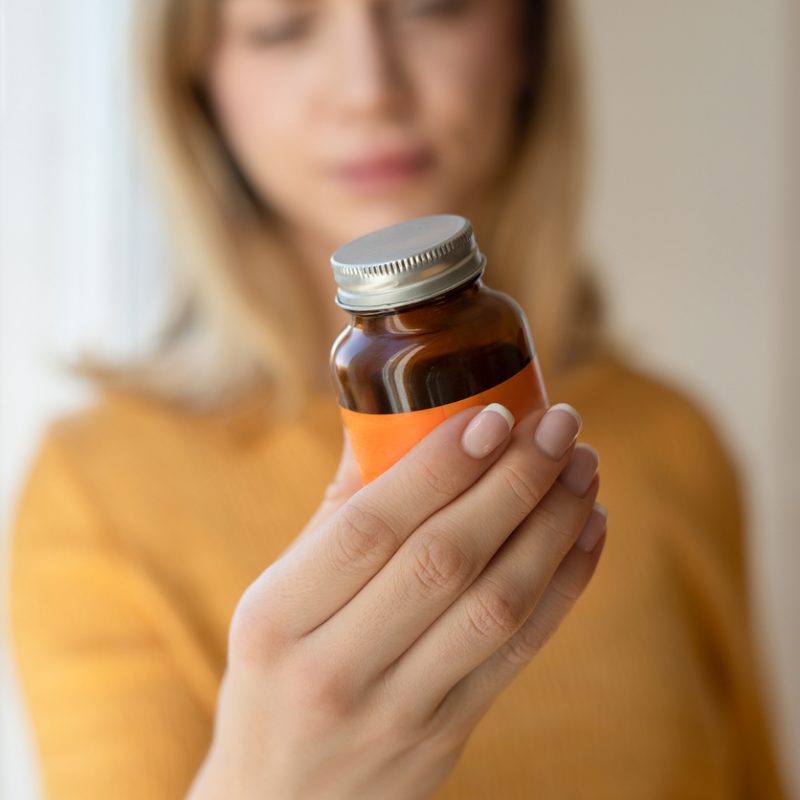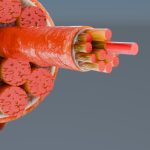
Quercetin, a supplement commonly found on health-food store shelves, also seems of interest to those in the exercise/sports realm. Here we aim to provide an overview of the chemical structure, biological activities, and bioavailability of quercetin. Whether we choose to incorporate quercetin-rich foods into our daily meal plan, or consume it in a supplemental form, quercetin may confer benefits for maintaining good health and preventing chronic diseases.
Attributes Abound
Quercetin belongs to a group of plant pigments categorized as flavonoids; these substances provide many fruits, flowers, and vegetables with their vibrant colors. For hundreds of years, quercetin has occupied a space in thehuman diet. Researchers have extensively studied its numerous health benefits, hoping to shed light on its antioxidant, antimicrobial, anti-inflammatory, antiviral, and anticancer properties. Its strong antioxidant properties enable it to scavenge free radicals which, when left unchecked, can damage cell membranes, tamper with DNA, and even cause apoptosis (cell death). In a similar fashion, quercetin has shown the ability to inhibit cancer cell growth and induce apoptosis of these malignant cells. Its cardiovascular benefits, ranging from lowering blood pressure and reducing cholesterol levels to fostering better endothelial function, make it a promising option for the prevention and treatment of cardiovascular diseases.
Some animal and human studies suggest that the flavonoids quercetin, resveratrol, and catechins (all found in high concentrations in red wine) may help reduce the risk of atherosclerosis, a serious condition that can lead to heart attack or stroke. These nutrients appear to protect against the damage caused by low-density lipoproteins (LDL, known as the “bad” cholesterol) and may help prevent death from heart disease. However, most human studies have only considered flavonoids as incorporated in the diet, not taken as supplements.
Test tube, or in vitro studies reveal that quercetin prevents damage from LDL cholesterol, and population studies show that individuals who consume diets high in flavonoids have lower cholesterol. One study found that subjects who consumed quercetin and an alcohol-free red wine extract (which contains quercetin) suffered less damage from LDL cholesterol. Another study found that quercetin reduced LDL concentrations in overweight subjects who demonstrated a high risk of heart disease. The topic requires much more research, in order to ascertain whether taking a quercetin supplement by itself will confer the same effect.
Quercetin as a Moderator of Cytokine Activity
High levels of cytokines, such as interleukin (IL)-1β, tumor necrosis factor (TNF)-α and IL-6, often have a direct alignment with certain chronic diseases, such as rheumatoid arthritis, asthma, atherosclerosis, Alzheimer’s disease and some cancers. In researching and studying potential treatments for these diseases, scientists keep an eye out for substances that may lead to cytokine inhibition. The anti-inflammatory properties inherent in quercetin foster the inhibition of inflammatory cytokines and enzymes; in fact, the majority of anti-inflammatory medicines act by inhibiting enzymatic cyclooxygenase activity or by blocking cytokine receptors.
One clinical trial looked at the effects of quercetin on early-morning stiffness as well as activity-induced pain in subjects diagnosed with rheumatoid arthritis (RA). After an 8-week trial, scientists found that supplementation with 500mg./day of quercetin significantly reduced early-morning stiffness and post-exercise discomfort, greatly helping female patients living with RA.
Cyclists Paint a Different Picture
As often happens in scientific research, data exists on both sides of the coin; several studies of elite cyclists illustrate this point.
One study of 11 highly-trained cyclists looked at the possible effects of quercetin on 30- kilometer time trial performance. Half of the group received 6 weeks of supplementation with quercetin, green tea leaf extract and antioxidant vitamins. The rest of the cyclists took a placebo for 6 weeks. Those who ingested the supplement blend reported a time enhancement of 1.7% compared with the placebo group.
However, another cyclist study revealed very different data. This protocol randomly assigned 39 trained cyclists to one of two groups: those who received a placebo and those who received a quercetin/EGCG supplemental blend. Over the course of 2 weeks, both groups of subjects cycled on 3 consecutive days for 3 hours a day. All of the cyclists maintained a mean power output of 56.9 ± 0.6% Wmax.. The 2 groups reported no difference in their total time trial duration, and showed no difference in mRNA expression for genes related to skeletal muscle mitochondrial biogenesis.
Similarly, research conducted on 40 trained cyclists over a 3-week period yielded the same results. The subjects randomly received either 1000 mg/day of quercetin or a placebo. Once again, the scientists failed to observe any appreciable differences in terms of cycling efficiency or skeletal muscle mRNA expression for PGC-1α or SIRT1.
The Brain Matters
Scientists looking at quercetin and its ergogenic effects accumulated data on 254 subjects. The study did reveal a small but significant VO2max benefit. Over a period of 14 days, receiving a median dosage of 1083 mg. of quercetin/day, the subjects reported a small but significant benefit in physiological measures of human endurance exercise capacity. The fascinating aspect that emerged, however, reflects the capacity of quercetin to enhance mental performance, no doubt owing in some part to its caffeine-like psycho-stimulant effects. Many studies have shown that supplementation with such psycho-stimulants can delay fatigue during endurance exercise. Scientists attribute this result in part to their ability to block adenosine receptors in the brain. When adenosine cannot act, the dopamine activity increases. Dopamine acts on the areas of the brain that elicit feelings of pleasure, satisfaction and motivation. Several other flavonoids also exhibit adenosine A1 receptor antagonist activity; however, quercetin demonstrated the highest affinity for this receptor of all the tested flavonoids.
Quercetin Mitigates Post-Exercise Muscle Damage
Multiple studies examined the effect of quercetin supplementation on serum levels of post-exercise creatine kinase (CK) and lactate dehydrogenase (LDH), both biomarkers of exercise-induced tissue damage. Results showed significantly lower plasma CK and LDH levels at some point or throughout the entire recovery period after exercise, even when measured 24 hours later.
It would appear that pre-workout quercetin supplementation may serve as an effective strategy for functional recovery following exercise-induced muscle damage. This could have resulted from a higher neuromuscular efficiency since, as mentioned previously, quercetin acts as an adenosine receptor antagonist, thereby boosting nerve transmission. Consequently, this dynamic increases muscular strength and reduces the perceived effort of exercise and fatigue.
The Quercetin Paradox
In the bloodstream, scavenging antioxidants such as quercetin get chemically converted into oxidation byproducts as they go about their mission to protect against free radicals. The main oxidation product, however, displays a high reactivity towards thiols, which over time can lead to a loss of protein function. Known as “the quercetin paradox”, this situation illustrates how in the process of offering protection, quercetin converts into a potentially biologically toxic product. The formation of these toxic metabolites should serve as a warning to those individuals considering an antioxidant supplementation.
Final Thoughts
Quercetin, the most abundant dietary flavonoid, appears in many foods that most individuals consume on a fairly regular basis. Fruits and vegetables provide the greatest dietary sources of quercetin, particularly citrus fruits, but also apples, onions, sage and green tea. Olive oil, grapes, red wine, dark cherries, and dark berries such as blueberries, blackberries, and bilberries also provide abundant quercetin.
As research progresses, the future views on quercetin appear promising, with potential uses not only as nutraceuticals but also pharmaceuticals, to help foster overall well-being and disease prevention. Currently, research shows that a supplement of 1000 mg. quercetin/day, for up to 12 weeks, can function as a safe, effective tool in reducing muscle damage and soreness following exercise. However, both the scientific and fitness communities will rely on further studies to fully elucidate quercetin’s mode of action, optimize its bioavailability, and assess its long-term efficacy and safety.
References:
https://www.healthline.com/nutrition/quercetin#bottom-line
https://www.frontiersin.org/journals/genetics/articles/10.3389/fgene.2022.938526/full
https://www.ncbi.nlm.nih.gov/books/NBK299055/
https://pubmed.ncbi.nlm.nih.gov/27294919/
https://pmc.ncbi.nlm.nih.gov/articles/PMC10384403/
https://www.webmd.com/vitamins/ai/ingredientmono-294/quercetin






